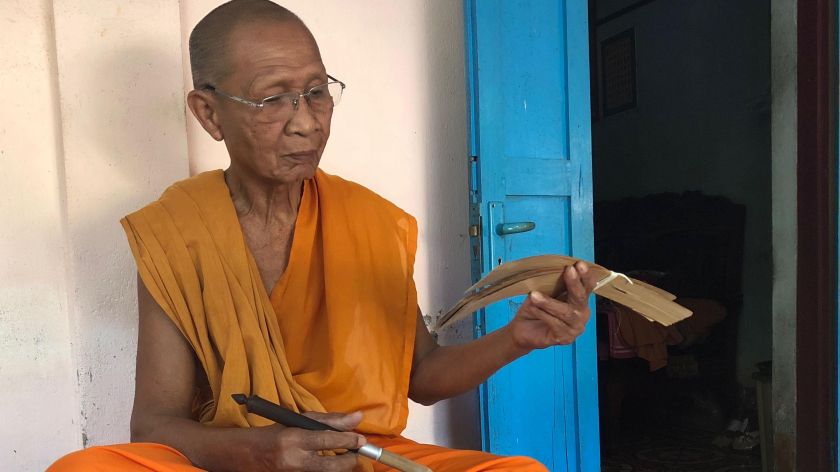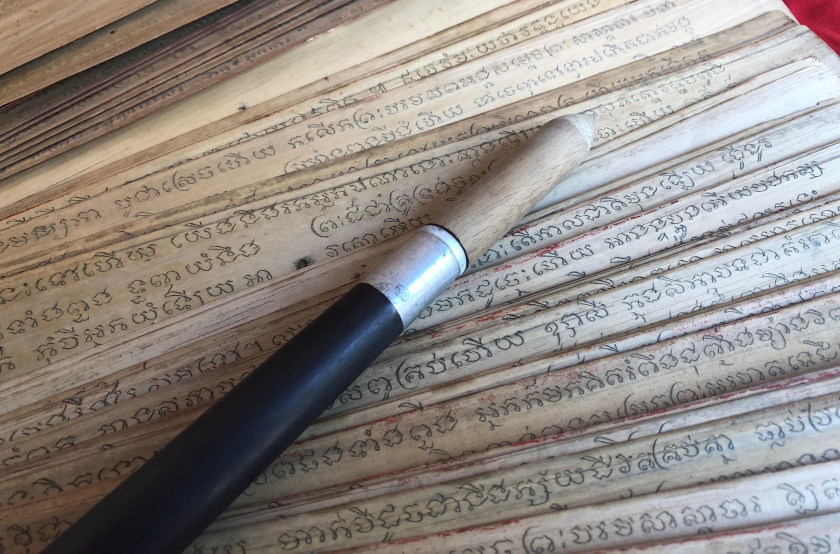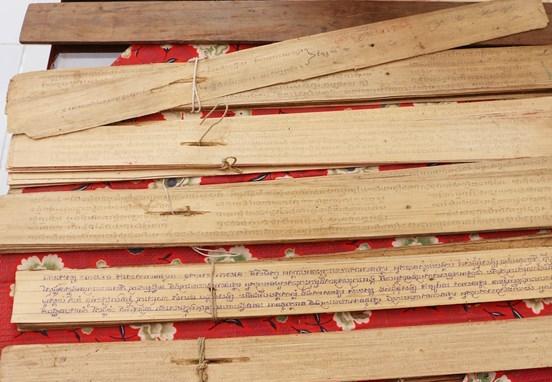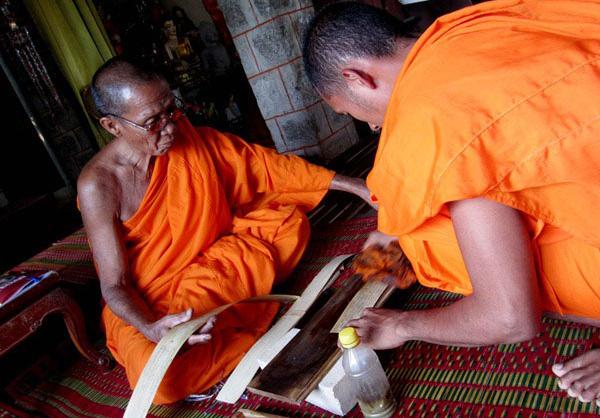The project of An Giang province aims to have a plan to protect and pass on to future generations the unique values of the intangible cultural heritage of knowledge and writing techniques on palm leaves of the Khmer people, as well as the participation of the people in preserving and promoting the value of the heritage.
According to the project, in phase 1 from 2022-2026, An Giang will focus on evaluating, collecting, verifying, classifying and editing heritage restoration; researching and determining whether the writing on palm leaves is ancient Balinese or ancient Khmer; and providing guidance on methods of preserving and maintaining palm leaf writings.
During this period, the province will also document and digitize the Khmer palm-leaf writing heritage in An Giang; create new versions of some Sutras to serve heritage education and tourism development; translate some contents of the Palm-leaf Sutras; strengthen the promotion and development of heritage to attract all social resources...
In phase 2 from 2028-2033, An Giang will build a dossier to register for recognition of the heritage of knowledge documents and palm leaf writing techniques of the Khmer people in An Giang province, under the UNESCO Asia-Pacific Memory of the World program.

Khmer monk in An Giang writes Buddhist scriptures on palm leaves
The knowledge and technique of writing on palm leaves of the Khmer people in An Giang is a kind of folk knowledge, inside of which lies a priceless treasure of human knowledge, which is the Buddhist scriptures. The Buddhist scriptures were written by the Khmer people on the leaves of the palm tree, called the Palm Leaf Sutra (Xatra Slakrit), this is a rare ancient book carved on palm leaves, written in ancient Khmer or Balinese (according to the Thomanadut and Mahainikai schools) that appeared in the 19th century.
The Khmer art of carving on palm leaves is very special. Palm leaves are selected when they are still buds on the tree and are grafted onto a tree frame so that the leaves can grow as desired, avoiding exposure to sunlight for 3-5 months, then the leaves are cut down, dried and used. To write Sutras on palm leaves, one must use an iron pen tip. After writing, use a cloth soaked in charcoal mixed with turpentine oil and dip it in kerosene to brush on the engravings. The uniqueness of palm leaf Sutras is due to the toughness of the leaves, combined with the dexterity, meticulousness and elaboration of the writer, so it can be expressed on both sides of the palm leaves.
Each set of Sutras has 4-10 books, each book has 20-60 leaves, each leaf has 5 lines, with about 150 words. Palm-leaf Sutras contain technical, aesthetic, artistic values and have important significance in the spiritual life and religious beliefs of the Khmer people.

Buddhist scriptures on palm leaves


In An Giang, palm-leaf scriptures are still preserved in 30/65 Khmer pagodas in Tri Ton and Tinh Bien districts, with over 100 sets of Buddhist scriptures. However, for many years, palm-leaf scriptures have not been written because there is no longer a source of palm leaves. At the same time, due to difficulties in preservation and not being able to withstand environmental impacts, palm-leaf scriptures have been damaged over time and are at risk of being lost.
Currently, there are very few Khmer monks in An Giang who know how to carve letters on palm leaves. If you want to learn, you must be patient and practice for a long time. To be able to carve, you must be well-versed in the content of each type of Sutra, because most of the palm leaf Sutras are carved in ancient Khmer or Balinese script. This causes many difficulties for monks and Buddhists who want to learn Buddhist Sutras from palm leaf Sutras.
More information:
An Giang is a multi-ethnic province, with about 29 ethnic groups, of which the four main ones are Kinh, Khmer, Chinese and Cham. The Khmer are an ethnic minority community that has long lived in An Giang, most concentrated in the two mountainous districts of Tri Ton and Tinh Bien, possessing a unique and diverse cultural heritage.
The Khmer ethnic group in An Giang has two intangible cultural heritages that have been included in the List of National Intangible Cultural Heritage by the Ministry of Culture, Sports and Tourism: "Seven Mountains Bull Racing Festival" in 2016, "Knowledge and techniques of writing on palm leaves of the Khmer people in Tri Ton and Tinh Bien districts" in 2017.






























